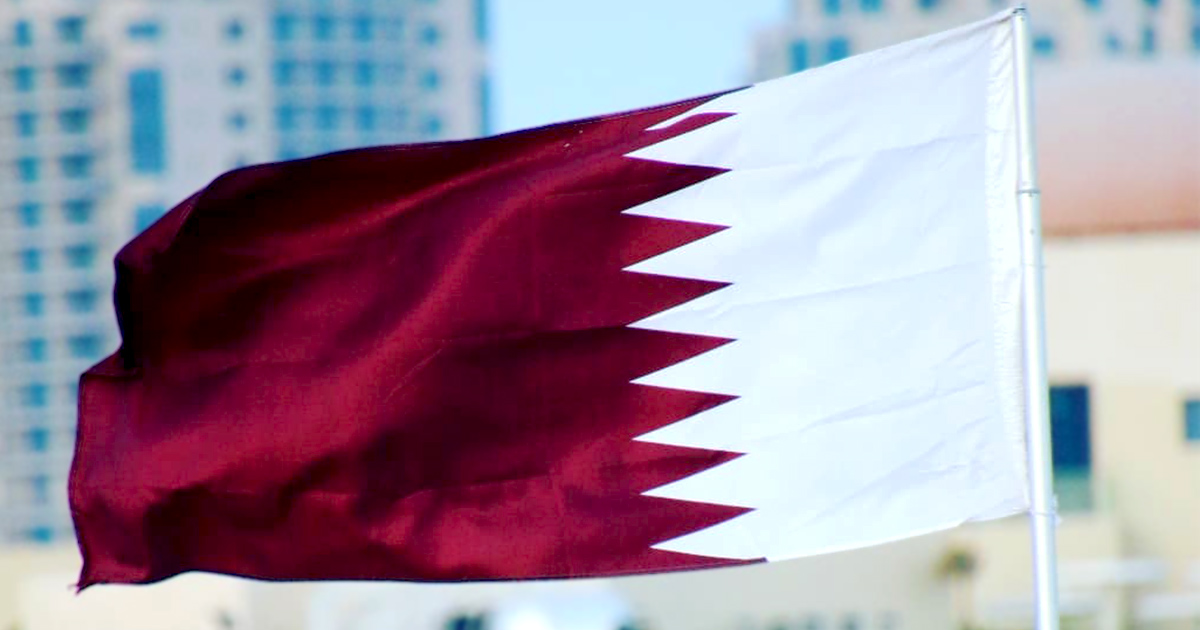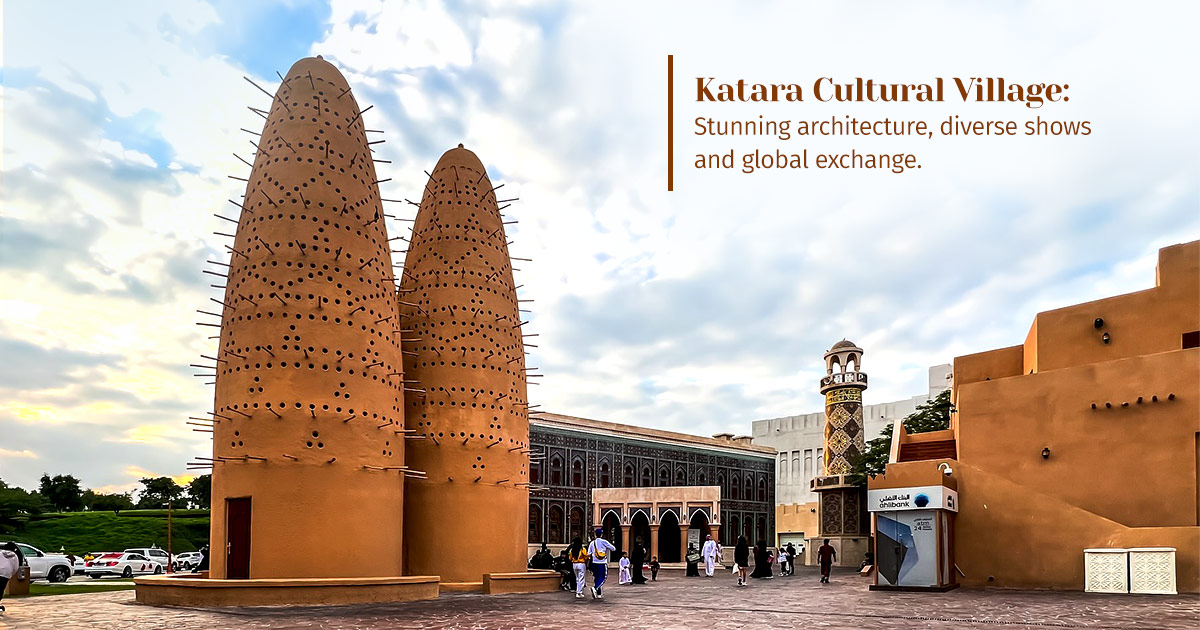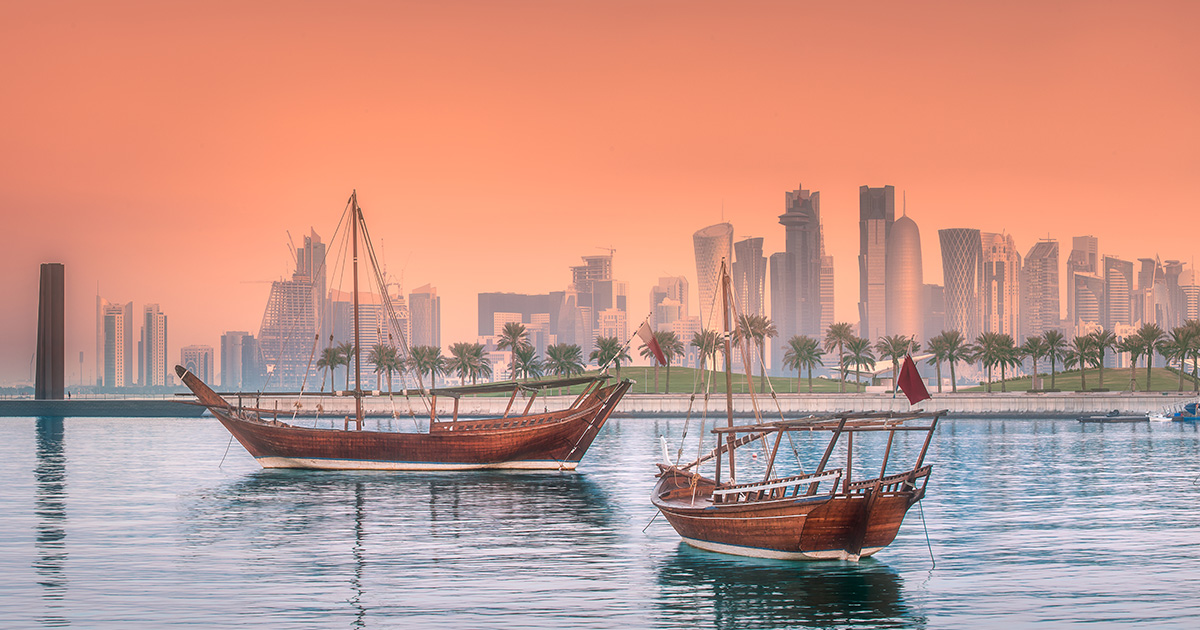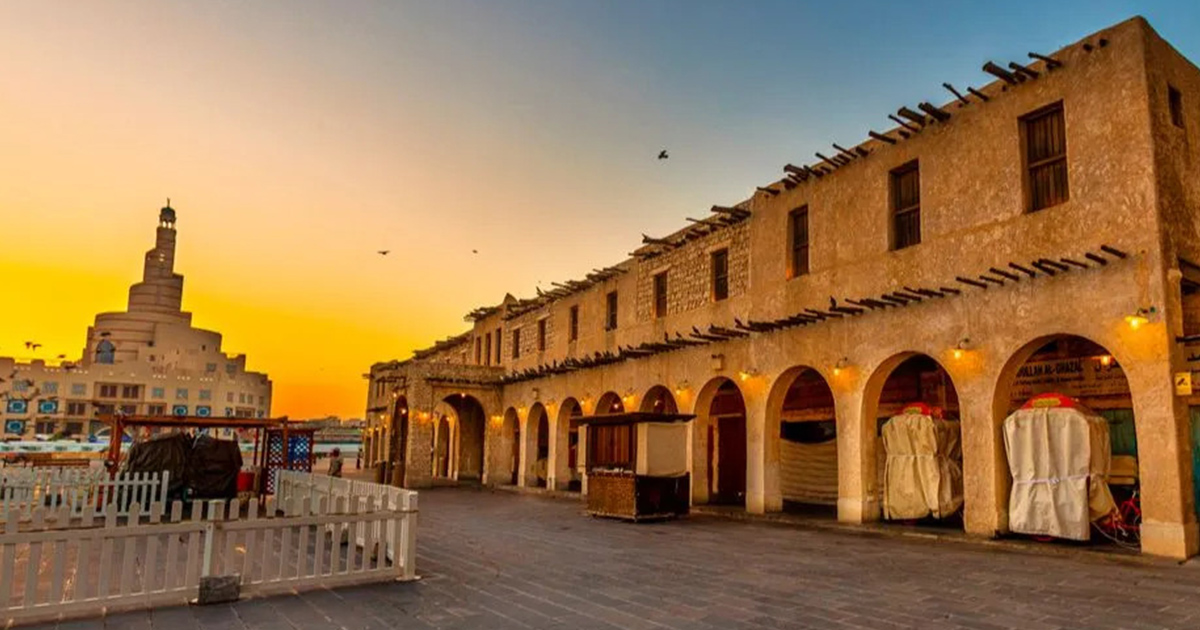
Qatar National Flag: Significance and History
General | Last updated : 15-07-2024
The Qatar flag is a powerful symbol that represents the rich history and vibrant cultural heritage of this Middle Eastern country. The Qatari National Flag is also known as Al Adaam, translates to "To the Qataris" and is pronounced "Lad-am" locally.
Historical Background
To understand the Qatar flag, we must first look back at its historical roots. The flag of Qatar has undergone several changes throughout history, reflecting the country's evolution and growth. The earliest known flag of Qatar dates back to the 19th century when the country was under the rule of the Al Thani dynasty. The flag consisted of a plain red background, which symbolized the valor and courage of the Qatari people.
However, it wasn't until the early 20th century that the modern design of the Qatar flag took shape. In 1916, Sheikh Abdullah bin Jassim Al Thani, the ruler of Qatar at the time, introduced a new flag that featured three distinct colors - white, red, and brown. These colors were inspired by the traditional Qatari sailing boats, known as dhows, which played a crucial role in Qatar's economy and way of life. The white stripe represented the pearl-diving industry, the red stripe symbolized the bloodshed by the Qatari people in defense of their homeland, and the brown stripe represented the dhow boats themselves.
The Qatar flag has evolved over time, reflecting the changing political landscape and the country's growing international stature. The current design of the flag, with its white and maroon horizontal bands, was officially adopted on July 9, 1971, when Qatar gained independence from British rule.
Prior to this, the flag underwent several modifications. In 1959, a serrated edge was added to the flag, giving it a distinct look and further distinguishing it from other flags in the region. This modification symbolized Qatar's unique identity and its desire to stand out as an independent nation.
Design and Symbolism
The design of the Qatar flag is simple yet powerful, capturing the essence of Qatar's cultural heritage and national values. The flag consists of two horizontal bands of different colors - white on the top and maroon on the bottom. The white color represents peace, purity, and the internationally recognized color of surrender. It reflects Qatar's commitment to promoting peace and harmony both domestically and internationally.
On the other hand, the maroon color represents Qatar's rich history, bravery, and resilience. It symbolizes the sacrifices made by the Qatari people throughout history to protect their land and preserve their way of life. The maroon color also serves as a reminder of Qatar's Bedouin heritage, as it was traditionally associated with the tents of the Bedouin nomads who roamed the deserts of Qatar. The registered shade is Pantone 1955C or Qatar Maroon, which leans more towards a reddish hue.
Importance of the Qatar Flag in National Identity
The Qatar flag holds immense importance in shaping the national identity of the Qatari people. It serves as a unifying symbol that brings together citizens from diverse backgrounds and promotes a sense of pride and belonging. The flag represents the values and aspirations of the Qatari nation, reminding its people of their rich history, cultural heritage, and shared destiny.
The flag also plays a crucial role in fostering patriotism and loyalty among Qatari citizens. It serves as a constant reminder of the sacrifices made by previous generations and the responsibility of the present generation to uphold the values and traditions of Qatar. The flag is proudly displayed during national celebrations, sporting events, and other significant occasions, evoking a sense of unity and camaraderie among the Qatari people.
Display and Usage
As a symbol of national pride, the Qatar flag should be displayed and used with utmost respect and reverence. There are specific guidelines and protocols that govern the proper display and usage of the flag. When hoisted on a flagpole, the Qatar flag should always be positioned at the top, with no other flags above it. It should be raised and lowered with care and should never touch the ground.
During national holidays and celebrations, it is common to see the Qatar flag displayed in public spaces, government buildings, and private residences. It is also customary to fly the flag at half-mast as a sign of mourning on occasions of national tragedy or the passing of a prominent figure. The flag should be treated with dignity and should never be used for any disrespectful or inappropriate purposes.
Interesting Facts about the Qatar National Flag
• The Qatar flag holds the Guinness World Record for the largest woven flag ever made. It was created in 2013 and measured a staggering 101,978 square meters.
• The flag of Qatar is one of the few national flags in the world that does not feature any stars, crosses, or crescents.
• The serrated edge of the Qatar flag is known as "the nine tips," which represent Qatar's historical nine municipalities.
• The Qatar flag is one of the most recognizable flags in the world, thanks to its distinct design and vibrant colors.
• The design of the Qatar flag has remained unchanged for over 50 years, symbolizing the country's stability and continuity.
Follow us on our social media channels:
Instagram @kuluqatar Facebook @kuluqatar X (Twitter) @kuluqatar








